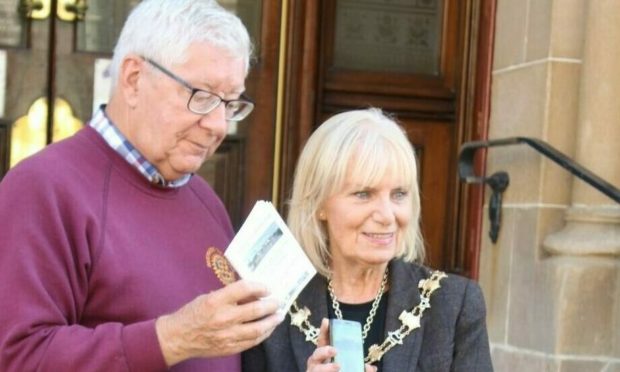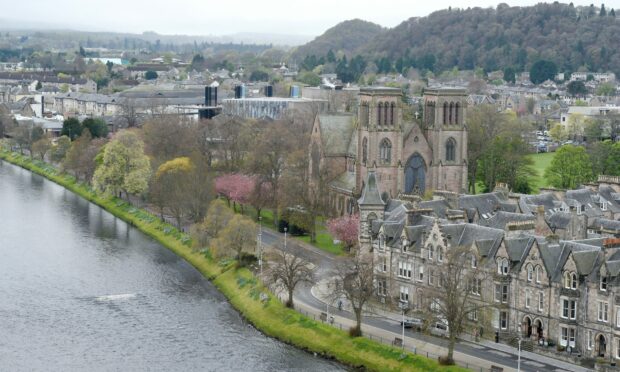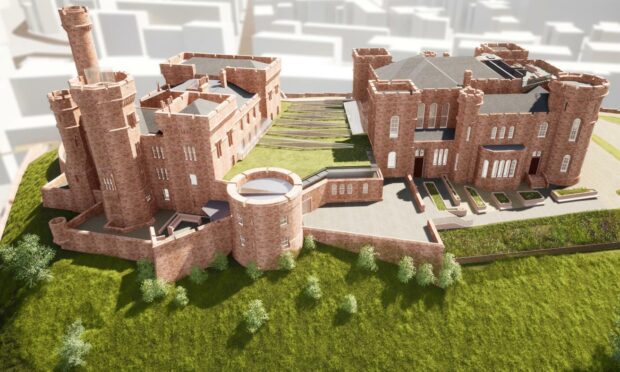Why does Inverness Cathedral feature a sculpture of a horse?
Have the Faith, Hope and Charity statues been playing musical chairs?
And how did the key to a city jail cell end up in Nova Scotia?
A new app launching today answers these questions and gives more fascinating insights into historic sites in the city.
Who created the new app?
The free app is the work of retired teacher Duncan MacDonald who published the book ‘Inverness Historic City & Highland Capital’ in 2016.
He took a year to develop the app, on Apple and Android, with local firm DeuXality on behalf of the Rotary Club of Inverness Culloden.
It guides visitors or residents around 32 historic sites, giving anecdotes about each place along the way.
The launch of the app marks 100 years of the Rotary in the city and comes as Inverness Castle is being transformed into a major tourist attraction.
Stories from the walk also feature in a booklet ‘Inverness City Historic Walk’. In addition, they appear on phone screens to assist the hard of hearing.
Inverness Common Good Fund has contributed £5,000 toward the £11,000 cost, with other funds coming from the Inverness Heritage Trust and Rotary clubs in Inverness.
Mr MacDonald, a former teacher at Inverness High School and deputy rector at Charleston Academy, believes it to be a first of its kind.
“Most other tourist city tours are either done in person or by a walkie talkie device.
“Tourists can undertake the walk in a couple of hours. Locals can do a few sites at a time and spread the complete walk over several occasions.
Which sites does the app feature?
“With the refurbishment of the castle in the near future it would seem a good time to implement an historic walk around the most interesting sites in the city centre which would give city visitors a clear insight into the history of Inverness city.”
Among the buildings on the walk is St Andrew’s Cathedral which contains several carved sculptures.
One appears on the arch surrounding the transept window facing the River Ness and is a wheel and a horse.
The story goes that the stone building blocks were raised by a pulley and wheel turned by a horse.
At one point a stone slipped and killed the horse which is commemorated in the carving.
Are the Three Graces in the wrong order?
The Three Graces statues are situated in Ness Walk, next to Ness Bank Church.
The sandstone carvings, portraying Faith, Hope, and Charity, were originally on a building on the corner of High Street and Castle Street, which was demolished in 1955.
The sculptures then lay in a store for six years before being given away to a museum owner in Orkney.
They remained there for over 50 years before being bought back by Highland Council and returned to Inverness.
But Mr MacDonald points out the names are in the wrong order.
Faith is the one in the middle clutching a Bible who stands above the word “Hope”.
Hope, with the metaphor of hope, an anchor, is perched atop the legend “Charity”.
Charity, which is giving a drink to a child, is called “Faith” on the plinth.
And the jail cell key? The old prison and courthouse was located next to where the steeple is now in Bridge Street.
An inmate, Roderick MacKay, who had been imprisoned for trying to ‘rescue’ illicitly-distilled whisky, enticed his warder into his cell and locked him up.
He then walked out of the prison with the key.
Trails will link to refurbished castle project
He fled to the west coast and in 1773 sailed from Loch Broom to Halifax, Nova Scotia.
The key to his cell, which he took with him when he escaped, is still in the public archives of the Canadian city.
The walk also takes in the Royal Northern Infirmary and Inverness Academy, both built with the help of donations from people involved in the slave trade.
Other sites to feature on the app include the castle, Eden Court Theatre, the Town House, Victorian Market, Greyfriars Cemetery, Balnain House and the Northern Meeting Rooms.
Inverness Castle is being transformed into a major tourist attraction.
The project, being managed by High Life Highland for Highland Council, is supported by £15 million Scottish Government and £3 million UK Government investment.
Project director Fiona Hampton hopes a number of city trails will connect to the castle.
“The new visitor attraction will aim to promote trails in and around the city and across the Highlands to encourage locals and visitors to come here to explore the history, heritage and culture of our region, and to enjoy our amazing scenery in doing so.
“We wish Duncan every success with his project and will be happy to promote the trail he is developing.”


